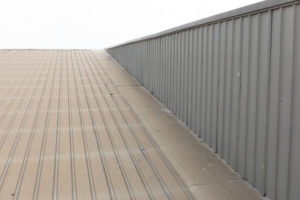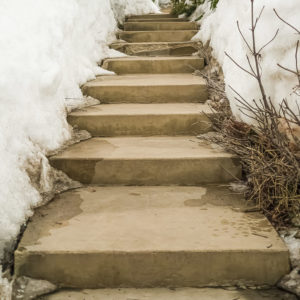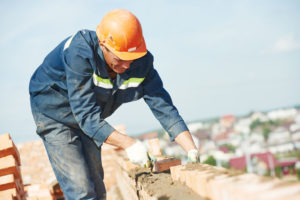Category: Uncategorized
Components Of A Commercial Roofing System
Respecting and properly designing a commercial rooftop has beneficial effects on the lifespan of the building and on reducing energy losses. This project must be carried out by commercial roofing Connecticut specialists, who will take into account the concrete conditions of the building. The main part of the construction of a flat roof consists in the optimal design that should take into account all the components of the roof.
The simple construction of a flat roof involve several components such as: a floor, a perimeter attic, slopes for water drainage, water drainage holes, thermal insulation and waterproofing as protective layers.
Ensuring easy access to a non-circulating flat roof is not necessarily a priority, as you can use a hatch or an external metal staircase. The costs are lower than for circulating roofs, as they do not include specific finishes or staircases. A non-circulating roof can still be walked on for maintenance, periodic checks ups or accessing technical appliances stored on the roof (conditioning units, solar panels etc.).
In order for a non-circulating roof to become circulable, it must be covered with a resistant membrane, the elevation of the perimeter parapet must have minimum 1m in height, and the roof must also be easily accessible.
Both types of flat roofs (with circulating or non-circulating surface) have the same system of waterproofing and thermal insulation layers.
Building Restoration Ideas
Restoration is a process similar to renovation, but its main goal is to make the building look like the original structure. Preserving and then using the potential of the old buildings could have as a final result a much lower consumption of resources and materials than demolition.
Often, the main step in restoring a building is the complete repair or restoration of the roof. For hundreds of years, the most beautiful and well-known historical buildings were covered with ceramic tiles. So, in order to preserve the original building, you should also use ceramic tiles for the roofing system.
Another important thing that you should do is repairing holes in walls. If the holes are rather small, you can use sticky fiberglass mesh and wall joints. If the hole is quite large, you can use a scrap piece of drywall. After that, you can repaint with the original color. If you want a really special look for a specific room or even for the entire building, a bold decision would be to replace the old fixtures with replicas of the original.
Don’t forget about the wood floors. Basically, this is an important element for the original look of your building. Instead of replacing it, you can refinish it. It’s not that difficult to do it on your own. To make it look even more authentic, remove the old carpets and let the wood floor to be the star.
Find great roof repair and restoration through http://www.nemasonry.com/new-england-roofing.
What Truly Happens to Concrete During the Colder Months of the Year?
When the weather gets cold, many things change when it comes to the way that construction materials tend to respond to the weather and temperature conditions. Many materials can no longer be used, since they freeze in the cold, and others can easily be damaged when temperatures go below certain levels.
Despite its remarkable resilience, concrete is also not indestructible. As the winter comes, concrete constructions that include building walls, walkways, driveways and external decorative elements in front of buildings and public areas, can end up with cracks and severe damage, especially in the presence of heavy vehicles and equipment. Concrete walls can also be damaged by storms and wind, and they require periodic masonry restoration Connecticut contractors to restore.
Why does concrete behave in such a way despite the fact that it’s considered one of the most durable materials in the world? Because of the constitution of concrete, the materials it is made of tend to expand and contract as temperatures change. Its shrinkage during extreme cold spells is usually responsible for cracks in concrete even if the construction itself is not too old.
The best thing to do in such cases is to call a dependable concrete restoration service and see how they can help restore your building or concrete elements to their former glory.
Concrete or Masonry for Your 2020 Project?
The weather is becoming increasingly severe each year all over the world and the process calls for more solid, more durable building solutions and for materials that can stand up to the strongest winds, excessive rain as well as to heat and harsh sunshine. Two of the strongest and most durable building solutions available today are concrete and masonry – if you are currently in the process of choosing the material for your new building’s walls, but you don’t know whether concrete or masonry would work best for you, here are a few things that you should know about these two materials:
- The raw material – masonry walls are made from bricks (made from shale or clay that is formed to shape and cured at high temperatures to give bricks the durability, the resistance and the thermal efficiency that make them so popular), while concrete is made from a mixture of cement, water and aggregate material;
- The building technique – masonry walls are erected one row at a time. Individuals bricks are placed in a row, then mortar is poured between every two bricks, a layer of mortar is spread on top of the row of bricks to prepare the place for the next row of bricks, then the procedure is repeated. Concrete is mixed to form a paste and it is poured into the frame that is removed when the concrete has dried. As with most restoration projects, it’s best to contact those in the Connecticut masonry industry for advice.
How to Maintain Concrete Through the Seasons
Concrete is among the most durable and most resistant construction materials ever, but even this strong material needs some attention – here is how to maintain your concrete surfaces:
- Ice removal – concrete surfaces, especially smooth ones, tend to become covered in ice. For the removal of the slippery layer of frozen water, you must avoid salt and other chemicals because they will erode the concrete surface – fortunately, sand is widely available and a very efficient, yet harmless deicer;
- Stain removal – concrete is sensitive to acids as well, so when you want to remove stains, such as oil spots or grease, make sure to use special stain removal products intended to be used on concrete;
- Use a suitable sealant – staining and the premature deterioration of the surface caused by the actions of water and harsh solar radiation can also be prevented with the right sealant. Apply the product on a perfectly clean and dry concrete surface and make sure to reapply the substance at the intervals shown in the instructions;
- Take care of cracks – thin cracks can enlarge quickly, turning into wide, unsightly gaps in no time, so make sure to fill them quickly when you notice them. Call for masonry repair at http://www.nemasonry.com.






















